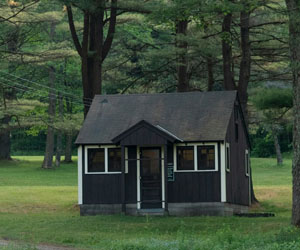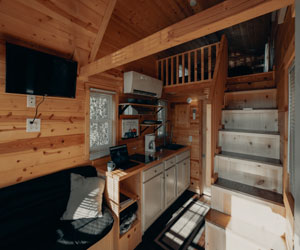



In a world marked by fast food chains, pre-packaged meals, and an ever-increasing demand for convenience, there's a movement gaining momentum that encourages a return to the roots of sustenance. Growing your own food is not just a trend; it's a way of life that offers a plethora of benefits for individuals, communities, and the planet.
The Resurgence Of Home Gardening
In recent years, there has been a significant resurgence in home gardening. People from all walks of life are rediscovering the joy and satisfaction that comes with nurturing a garden and producing their food. Whether you have a sprawling backyard or just a tiny balcony, there's a way to grow something that will grace your table with fresh, homegrown flavors.
The Joys Of Growing Your Own Food
One of the most immediate and rewarding aspects of growing your own food is the connection you establish with the earth. As you till the soil, plant seeds, and watch your crops grow, you become part of the natural world's cycles. The joy of seeing a tiny seed sprout into a thriving plant and, eventually, bearing fruits or vegetables is a deeply gratifying experience. It's a tangible connection to the earth's rhythms.
Nutrition And Health Benefits
Homegrown produce is not only delicious but also healthier. You have control over what goes into your garden, which means you can choose to grow organic, pesticide-free food. This translates into fresh, nutrient-rich produce that you can pick at the peak of ripeness, ensuring the highest levels of vitamins and minerals. Additionally, the physical activity and fresh air involved in gardening contribute to a healthier lifestyle.
Environmental Impact
Growing your own food is a sustainable and environmentally friendly practice. It reduces the carbon footprint associated with the transportation and packaging of commercially grown produce. Home gardens can also serve as biodiversity hubs, attracting pollinators and beneficial insects, contributing to the health of local ecosystems.
Community Building
Gardening often brings people together. Neighbors share gardening tips, surplus produce, and the sense of community that comes with working toward a common goal. Community gardens, in particular, have become hubs for social interaction and a source of pride for neighborhoods.
The Power Of Self-Sufficiency
Growing your own food provides a degree of self-sufficiency. It empowers individuals and families to take control of their food supply, making them less dependent on external sources. It's a form of insurance against food shortages, rising prices, or other unforeseen circumstances.
In a world that's constantly moving at a breakneck pace, taking the time to cultivate your food offers a sense of grounding, purpose, and fulfillment. The act of growing your own food is not just about the end product on your plate; it's about the journey, the connection to nature, the health benefits, and the community it fosters. So, whether you have a windowsill herb garden or a vast backyard plot, consider taking the plunge into the world of growing your own food. It's a journey that's bound to enrich your life in more ways than you can imagine.
Creating A Beautiful And Thriving Garden
 Assess Your Garden Conditions: Before you begin selecting plants, it's essential to assess your garden's conditions. Consider factors like sunlight, soil type, moisture levels, and climate. Some plants thrive in full sun, while others prefer shade. Some can tolerate dry conditions, while others need consistently moist soil. Understanding your garden's unique environment is the first step in making informed plant selections.
Assess Your Garden Conditions: Before you begin selecting plants, it's essential to assess your garden's conditions. Consider factors like sunlight, soil type, moisture levels, and climate. Some plants thrive in full sun, while others prefer shade. Some can tolerate dry conditions, while others need consistently moist soil. Understanding your garden's unique environment is the first step in making informed plant selections.
Define Your Garden's Purpose: What do you want to achieve with your garden? Are you looking to create a lush, private retreat, or do you aim to grow a bountiful vegetable garden? The purpose of your garden will greatly influence your plant selection. For example, a meditation garden may focus on fragrant and low-maintenance plants, while a vegetable garden will prioritize edible crops.
Choose Plants That Thrive In Your Climate: Plants that are native or well-suited to your climate are more likely to thrive. Native plants are adapted to the local conditions and require less maintenance. They also support local wildlife and pollinators.
Consider Growth Patterns: When selecting plants, consider their growth habits. Some plants are compact and tidy, while others can be sprawling or invasive.


Compact Living With A Sustainable Touch
 Sustainability: Small footprint homes are known for their sustainability. The reduced size and efficient design mean fewer materials are needed for construction, resulting in a smaller environmental footprint. Many small footprint homes also incorporate eco-friendly materials and energy-efficient systems.
Sustainability: Small footprint homes are known for their sustainability. The reduced size and efficient design mean fewer materials are needed for construction, resulting in a smaller environmental footprint. Many small footprint homes also incorporate eco-friendly materials and energy-efficient systems.
Cost-Effective: Smaller homes are generally more affordable, making homeownership accessible to a broader range of people. Reduced utility costs and maintenance expenses contribute to long-term savings.
Minimalism: Small footprint living encourages minimalism, a lifestyle that prioritizes quality over quantity and focuses on reducing clutter and material possessions. This approach often leads to a simpler, less stressful way of life.
Mobility: Some small footprint homes are built on wheels or designed for easy relocation. This provides homeowners with the freedom to move or travel as they wish, leading to a more mobile and adventurous lifestyle.
Energy Efficiency: Smaller spaces are easier to heat and cool, resulting in lower energy consumption. Many small footprint homes incorporate energy-efficient appliances, solar panels, and other sustainable technologies to further reduce their carbon footprint.
Community Living: Some small footprint housing developments encourage community living. Shared spaces and communal facilities foster social interaction and a sense of belonging among residents.
Innovation: The small footprint housing movement has spurred innovation in design and construction. Architects and builders are coming up with creative solutions to maximize space utilization, often incorporating modular and multi-functional furniture.
Exploring The Benefits Of Solar Energy
 2. Reduced Electricity Bills
2. Reduced Electricity Bills
Solar panels allow homeowners and businesses to generate their electricity, which can lead to substantial cost savings on their electricity bills. By producing your electricity, you can significantly reduce or even eliminate your reliance on traditional utility providers.
3. Energy Independence
With solar panels on your roof or property, you gain a degree of energy independence. You are less reliant on the grid, which can be especially advantageous during power outages. Solar power systems, combined with energy storage solutions like batteries, can provide a consistent supply of electricity even when the sun isn't shining.
4. Increased Property Value
Homes and commercial properties equipped with solar panels often see an increase in their market value. Solar panels are viewed as attractive assets, and many potential buyers are willing to pay a premium for a property with solar installations.
5. Government Incentives
Many governments worldwide offer incentives, tax credits, and rebates to encourage the adoption of solar energy. These financial perks can make solar installations more accessible and affordable for homeowners and businesses.
6. Low Operating Costs
Once installed, solar panels have minimal operating and maintenance costs. Regular cleaning and occasional inspections are usually all that's needed to keep the system running efficiently. This low-maintenance feature makes solar energy a cost-effective long-term investment.






Embracing The Future Of Convenience And Efficiency
 Smart Homes: The Cornerstone Of Automated Living
Smart Homes: The Cornerstone Of Automated Living
At the heart of automated living are smart homes. Smart homes are equipped with a wide range of devices and systems that can be controlled remotely and often autonomously. These include smart thermostats, lighting systems, security cameras, and even kitchen appliances. The integration of these devices into a centralized control hub, often accessible through a smartphone or voice-activated device, allows homeowners to create a fully automated and customized living environment.
Convenience Redefined
One of the primary appeals of automated living is the enhanced convenience it offers. Imagine arriving home on a scorching summer day to find your smart thermostat has already adjusted the temperature to your preferred level. Or, picture a scenario where your home's lights gradually brighten in the morning as you wake up, and your coffee maker starts brewing your morning cup without you lifting a finger. These examples illustrate how automation can simplify daily routines and make life more enjoyable.
Energy Efficiency
Automation also plays a pivotal role in promoting energy efficiency. Smart thermostats, for instance, can learn your heating and cooling preferences and create schedules that reduce energy consumption. Smart lighting systems can automatically turn off lights in unoccupied rooms, and smart appliances can operate during off-peak hours to save on energy costs. All of these actions lead to lower utility bills and a reduced environmental footprint.
Security And Peace Of Mind
Automated living extends to home security as well. Modern security systems often feature motion-activated cameras, doorbell cameras, and smart locks.
A Healthier, Safer, And Greener Way To Clean
 Health Hazards: Many conventional cleaning products release volatile organic compounds (VOCs) into the air, contributing to indoor air pollution. Prolonged exposure to VOCs can lead to respiratory issues, allergies, and skin irritations.
Health Hazards: Many conventional cleaning products release volatile organic compounds (VOCs) into the air, contributing to indoor air pollution. Prolonged exposure to VOCs can lead to respiratory issues, allergies, and skin irritations.
Environmental Impact: Harsh cleaning chemicals are not eco-friendly. When washed down drains, they can contaminate water systems and harm aquatic life. The production and disposal of these chemicals also contribute to pollution and waste.
Chemical Residue: Residues from chemical cleaners can linger on surfaces, posing long-term health risks, especially in homes with children or pets.
Benefits Of Chemical-Free Cleaning
Healthier Indoor Air: Chemical-free cleaning means cleaner indoor air quality, reducing the risk of respiratory problems and allergies for you and your family.
Reduced Health Risks: Non-toxic cleaning products reduce the risk of skin irritations and other health problems associated with chemical exposure.
Environmentally Responsible: Chemical-free cleaning is gentle on the environment. It doesn't contribute to water pollution, and it reduces the production and disposal of harmful chemicals.
Safer For Children And Pets: Chemical-free cleaning eliminates the risk of harmful chemical residues on surfaces, making your home safer for kids and pets.
Methods Of Chemical-Free Cleaning
Vinegar And Water: A mixture of white vinegar and water can be used to clean glass, countertops, and even sanitize surfaces.
Baking Soda: Baking soda is an excellent abrasive cleaner. It can be used to scrub surfaces, deodorize, and even extinguish small fires.
Protecting Our Planet Through Sustainable Practices
 Environmental benefits are critical for several reasons:
Environmental benefits are critical for several reasons:
Ecosystem Health: By reducing pollution, habitat destruction, and resource depletion, environmental benefits help maintain the health and diversity of ecosystems.
Climate Change Mitigation: Sustainable practices that reduce greenhouse gas emissions and promote carbon sequestration are essential for combating climate change.
Resource Conservation: Environmental benefits help protect and conserve vital resources like water, soil, and biodiversity.
Human Health: A cleaner environment means better air and water quality, which directly affects human health.
Strategies For Achieving Environmental Benefits
Numerous strategies and practices contribute to environmental benefits:
Renewable Energy: Transitioning to renewable energy sources like solar, wind, and hydropower reduces greenhouse gas emissions and lessens the environmental impact of energy production.
Waste Reduction: Reducing, reusing, and recycling materials minimizes waste and lowers the environmental footprint of resource extraction and disposal.
Sustainable Agriculture: Practices like organic farming, crop rotation, and agroforestry help maintain soil health, reduce chemical use, and preserve biodiversity.
Green Building Design: Energy-efficient and sustainable building designs can lower energy consumption and minimize the use of natural resources.
Conservation And Restoration: Protecting and restoring natural habitats can preserve biodiversity, improve water quality, and sequester carbon.